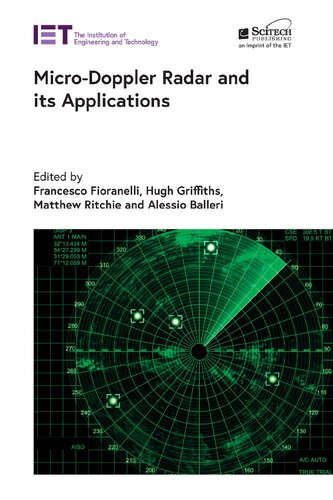

Most ebook files are in PDF format, so you can easily read them using various software such as Foxit Reader or directly on the Google Chrome browser.
Some ebook files are released by publishers in other formats such as .awz, .mobi, .epub, .fb2, etc. You may need to install specific software to read these formats on mobile/PC, such as Calibre.
Please read the tutorial at this link: https://ebookbell.com/faq
We offer FREE conversion to the popular formats you request; however, this may take some time. Therefore, right after payment, please email us, and we will try to provide the service as quickly as possible.
For some exceptional file formats or broken links (if any), please refrain from opening any disputes. Instead, email us first, and we will try to assist within a maximum of 6 hours.
EbookBell Team

0.0
0 reviewsThis book covers the latest developments in radar micro-Doppler signatures and non-cooperative recognition of moving targets, for researchers and advanced students of radar systems. Micro-Doppler signatures is a very broad topic with applications in healthcare, security and surveillance. Edited by leading researchers in the field, the book consists of a series of chapters with contributions from different groups of authors who are international experts on their topics.
The following topics are covered: multistatic radar micro-Doppler; passive radar approaches for healthcare; sparsity-driven methods for micro-Doppler detection and classification; deep neural networks for radar micro-Doppler signature classification; classification of personnel for ground-based surveillance; multimodal sensing for assisted living using radar; micro-Doppler analysis of ballistic targets; small drones and bird signatures as emerging targets; hardware development and applications of portable FMCW radars; digital-IF CW Doppler radar and its contactless healthcare sensing; L1-norm principal component and discriminant analyses of micro-Doppler signatures for indoor human activity recognition; and micro-Doppler signature extraction and analysis for automotive application. Finally, the editors have written a concluding short chapter that brings together an overview of the field and discusses likely future trends.